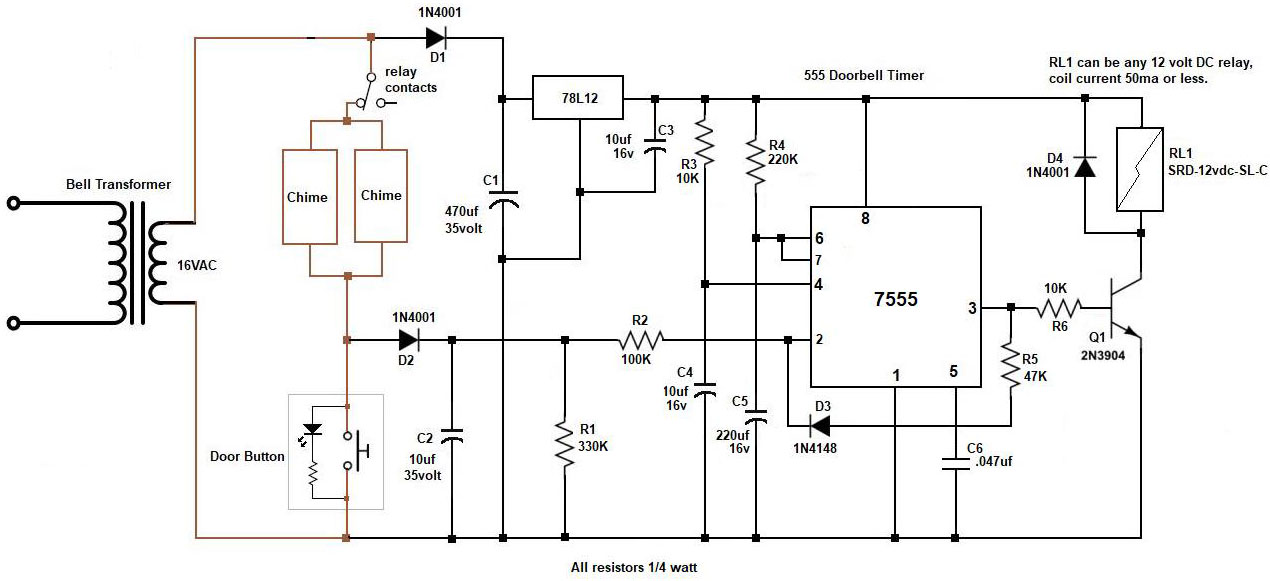The simplest solution is to use a time-delay fuse of proper rating, with protection applied to each of his two doorbell devices. Suitable 0.25” x 1.25” devices are made by Bussmann type MDL and Littelfuse type 313.
First, it is necessary that the RMS current demand of the doorbell mechanisms be known. This might be a value obtained from the manufacturer, or by measurement using a true-RMS ammeter (or using a true-RMS voltmeter measuring the voltage drop across a small resistance — say, one ohm — and computing the RMS current using Ohms Law).
The Bussmann characteristic curves for MDL time-delay fuses can be found at www.cooperindustries.com/content/dam/public/bussmann/Electrical/Resources/product-datasheets-a/Bus_Ele_DS_2004_MDL_MDL-V.pdf.
Let’s assume that the doorbell device draws one ampere RMS, and that it is desirable that the fuse will operate after five seconds of continuous circuit current. Using the characteristic curves, circuit current (amperes) is displayed on the horizontal scale, and time (seconds) is displayed on the vertical scale. Find the intersection of 1 ampere and 5 seconds on the chart. The next-larger fuse (curved line) is labelled “3/10.” This indicates that a Bussmann type MDL fuse rated for 3/10 amperes will support a 1-ampere load for nearly 7 seconds, which is a close-enough solution to the problem.
Similarly, the characteristics of Littelfuse type 313 time-delay fuses may be found at www.littelfuse.com/~/media/electronics/datasheets/fuses/littelfuse_fuse_313_315_datasheet.pdf.pdf.
Applying the same reasoning, a Littelfuse type 313 fuse rated at 3/8 amperes will clear in just over five seconds while conducting a one-ampere RMS continuous load.
Bussmann and Littelfuse also make fuse holders. For this application a leaded (in-line) plastic fuse holder might be best — Littelfuse #150HV.
Be sure to buy some spare fuses. Good luck.

